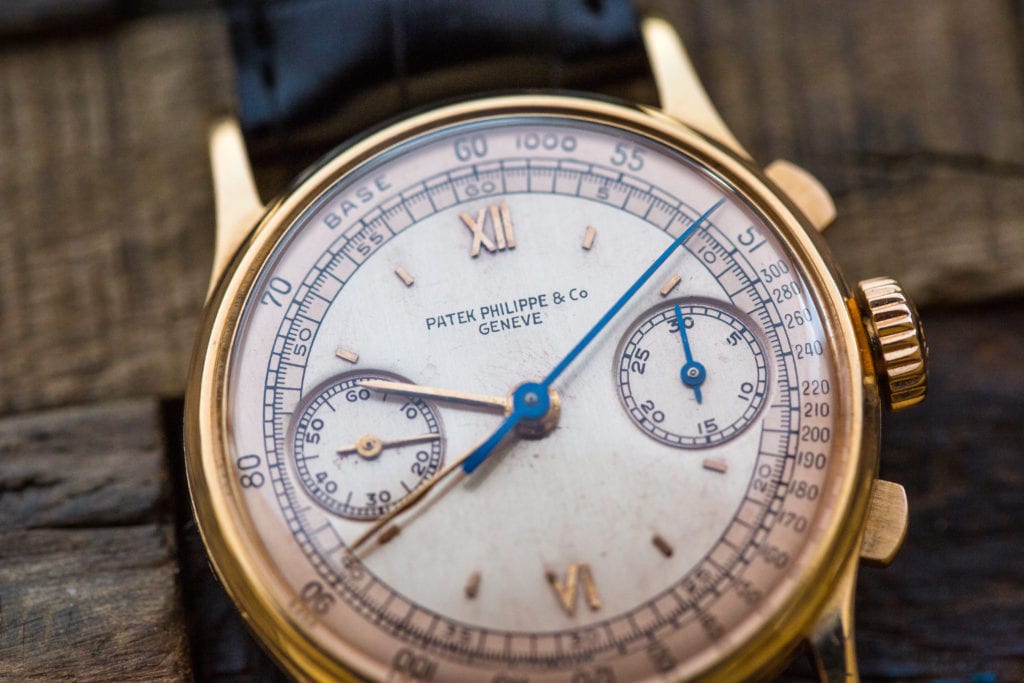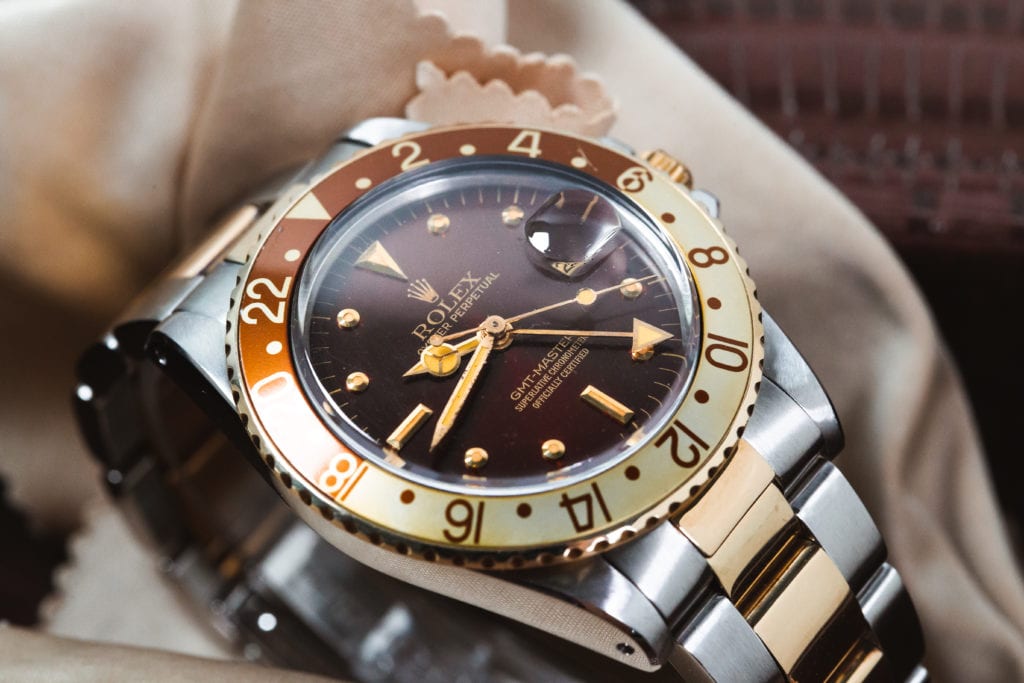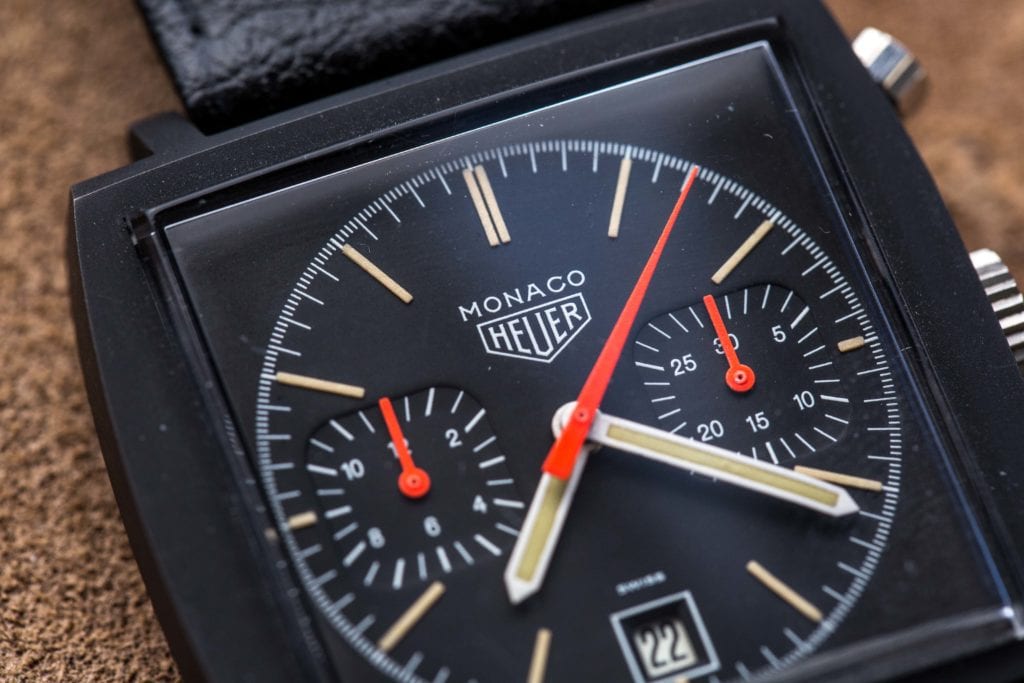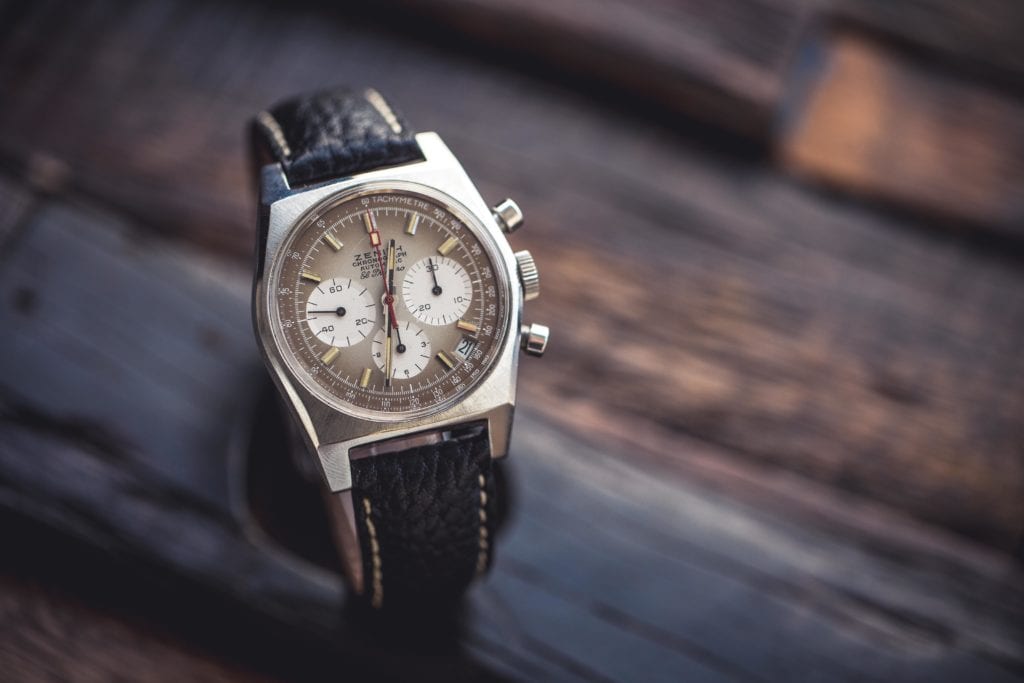Although we don’t specialize in vintage pre-owned watches, we do see a number of vintage pieces pass through our doors. In turn, we often receive a number of different questions about buying vintage. So, we decided to go to one of the leading authorities on vintage, Eric Wind of Wind Vintage, to tackle the fundamentals.

Unsurprisingly, one of the key things I learned when I sat down with Eric is this: the first step to buying vintage is acknowledging you’re not an expert. Instead, you need to rely on the expertise of a seasoned and trustworthy dealer, like Eric himself. We start with the basics – what exactly makes a watch vintage? Then, we span into common pitfalls of novice buyers, how to maintain your vintage pieces, and everything in between.
What classifies a watch as “vintage”?
There are different definitions – the word “vintage” itself comes from the French word for twenty, “vingt,” and refers to years for wine. So, technically, “vintage” means something that’s twenty years old, minimum. However, for watches today, “vintage” generally means 1980s and earlier. Around that time, you see a broad transition from acrylic to sapphire crystals and the beginning of computer-aided design, which took a number of handcrafted aspects out of watchmaking.
Today, we’re 40 years out from 1980, and watches from twenty years ago still aren’t considered vintage – do you have any predictions for a particular design trend or way watches are made that might define a vintage watch in the future?
As I mentioned, one of the most important aspects of today’s vintage watches are acrylic crystals, which obviously affect the look of the watch. You can see the dial much more clearly without all the reflections that sapphire crystals have. So, as a broad category, most people define vintage as any watch with an acrylic crystal, short of the Moonwatch that’s still made by OMEGA with an acrylic crystal. Today, 99.999% of watches in the luxury segment have sapphire crystals. So, that was a big change – obviously a positive one – sapphire is more scratch resistant and it allows watchmakers to offer higher depths of water resistance. That said, people are starting to call 1990s Rolex models neo-vintage, for instance, and values have started to increase dramatically. We’re starting to see a number of dealers focusing on those neo-vintage models, maybe for budget reasons – most of those watches are still under $10,000 but are increasing in value. In many cases, they’ve doubled over the last two or three years. Essentially, 90s are the next vintage.
In your experience, are there certain brands that consistently retain their quality and subsequently their value over time? Can you define some characteristics that signify the quality of a vintage watch?
By far the most liquid and exciting aspect of vintage watches in the last decade has been Rolex. The majority of my business is buying and selling vintage Rolex watches. I also do a lot with vintage OMEGA watches, Patek Philippe, Heuer, and plenty of other brands. But, in general, most of the business I do is with vintage Rolex.

Rolex is obviously one of the most respected luxury brands in the world, period. Their modern watches are absolutely on fire in the pre-owned market. There are probably many reasons why Rolex has been so successful at creating high quality timepieces. The first is from a technical perspective, they were one of the first companies to promote the self-winding, automatic watch, which people love because they don’t have to wind it every day. That goes back in their catalog to around 1930 and continues in their product line today.
The second technical aspect is their Oyster case, which also continues in their watches today. The Oyster case provides water resistance and dust resistance – it’s very technically superior. Elements like water and dust were major issues back in the day – actually, it’s still a major issue with precious metal tool watches.
The third component, which is not technical, is that they’ve benefitted from being part of a foundation. Like many other companies, if Rolex had just been profit-oriented, they would have upped production. For example, their annual production has been around 800,000 watches for many years. Yet, if Rolex had been part of a private equity or private ownership, they probably would have jacked up production to five million watches per year long ago because the demand was there. Obviously, if that happened, it would mean many more Rolex watches would be entering the market and values wouldn’t be retained on the second-hand side. Then, there would be an erosion of brand perception.

Still, the last important aspect of why Rolex has been so successful, in my opinion, is their emphasis on bracelets. People love watches on bracelets – most people want to have a watch on a bracelet if possible. In more recent years, they’ve only become more popular with the trend of athleisure and casual dress. People want a watch they feel like they can wear with a hoodie or a suit, on the rare occasion they have to wear a suit.
What are questions every buyer should ask when purchasing vintage?
There are a few things to consider asking when purchasing vintage. Today, condition has become increasingly important for value. Back in the early 80s, the difference between a new old stock, unworn watch with original box and papers and a heavily worn watch with replacement parts, reprinted dial, etc. was 10%. Now that difference can be 20,000%. So, that’s a huge change. In the past, it was about the model itself, not the condition, but now, it’s about the condition. So, asking about that is imperative.
In general, dials are most important. So, asking if the dial is original is key. For example, take sport watches with luminous material – whether it be radium from watches prior to 1963 or tritium used on watches after 1963. In many cases, it was removed by the manufacturer or local watchmakers and reapplied. That has an absolutely massive effect on value. You should always ask about originality – not just the dial but all the pieces – the bezel insert, the crown, the pushers, the bracelet, the caseback, the crystal – even critical parts of the movement – ask if they’re signed by the company. Those can all be very important for value.

I encourage buyers to not only ask questions but also take a forensic sort of approach, using tools like a UV light, Geiger counter, and loupe to assess the watch themselves. Asking about the provenance of a watch is also important – asking where it came from. Does it have a tie to an original owner?
When it comes to box and papers, they can be helpful, but they’re not a critical element. In general, they add roughly 25% to the value of a watch if it has original box and papers, but you need to watch out for box and papers that are aftermarket or were blank, filled in, and added to the watch recently. Generally, novice buyers are focused on having a “full set,” meaning box and papers. It’s crucial for people to learn that having box and papers doesn’t really offer any safety or security from an investment point because it could be fake. I’ve seen novices falling into the trap of buying a watch in poor condition with a replacement dial, replacement hands, replacement bezel insert – all these vital pieces – but it still has box and papers. They think they’re getting a good piece when a more serious collector wouldn’t want to buy that watch even if the box and papers were original because the watch itself is more important.
If I’m a novice vintage buyer, how I can best research the watch I’m interested in so I can be discerning when looking at a dial or identify a trustworthy seller who’s going to give me accurate information about what may have been refurbished or replaced?
First I would say, if you’re reading this article and think you’re ready to go searching online, go on eBay, and know what you’re looking at, you’re gonna get slaughtered. The first step is really buying the seller, but identifying the right seller can be tough. There are a lot of so-called “trusted sellers” in the space who have really ripped off their clients to the tune of millions of dollars. So, if you’re a novice, you also need to ask questions like, what’s your return policy? If I decide I want to sell the watch, will you buy it back in the future? Amazingly, a lot of dealers won’t do this – they won’t buy back their own product or help you sell it down the road or trade it in – which tells you about their confidence in what they’re selling. Asking these questions is a quick way people can figure out if they’re actually dealing with someone who’s credible or not.

It’s also important to get the seller on the phone. I have people contacting me all the time on various platforms – Instagram, email, Facebook. To me, it’s amazing that people will drop hundreds of thousands of dollars and never actually speak to the dealer on the phone. Talking is another good way to get a feel for who they are. When I actually get on the phone with someone, we develop a rapport. Many vintage dealers won’t get on the phone with you, which says a lot as well. They’re just looking to sell you stuff, not actually form a working relationship with you.
The next step would actually be meeting in person, which is helpful if that’s possible. If I can put a face to the name, whether it’s in Florida where I’m based or New York or LA or Boston or Atlanta – wherever – meeting obviously adds a whole additional level, a more personalized relationship.
How do you recommend vintage watch owners care for and maintain their vintage pieces?
The beautiful aspect of these things is that they’re able to last for hundreds of years if they’re taken care of, and there are pretty basic things you can do for maintenance. For instance, if it’s possible to make a watch water resistant, I would recommend trying to do that. I’ve seen a lot of watches – Rolex watches with gilt glossy dials from the 50s and 60s – they’ve been damaged on airplanes from moisture developing inside the crystal and falling on the dial – we’re talking about six-figure losses on the value of those watches. It’s not that hard to make a watch water resistant. It usually involves a couple dollars with of rubber gaskets getting put in the back of the case and crown, then making sure the crystal isn’t cracked, etc. So, on the maintenance side, water resistance is definitely important.

Otherwise, hopefully you’ve bought the watch from someone who knows where it can be repaired if it stops working or needs service. There are plenty of watchmakers out there, but there are also plenty of bad watchmakers out there who won’t restore the watch properly – they’ll cut corners or just put the movement in a cleaning machine without actually disassembling it – they can do all kinds of terrible stuff. So, you have to work with the best, and it’s not so easy to find who you should work with.
Get More Articles Like This in Your Inbox
We're constantly creating great content like this. So, why not get it delivered directly to your inbox? By subscribing you agree to our Privacy Policy but you can unsubscribe at any time.






